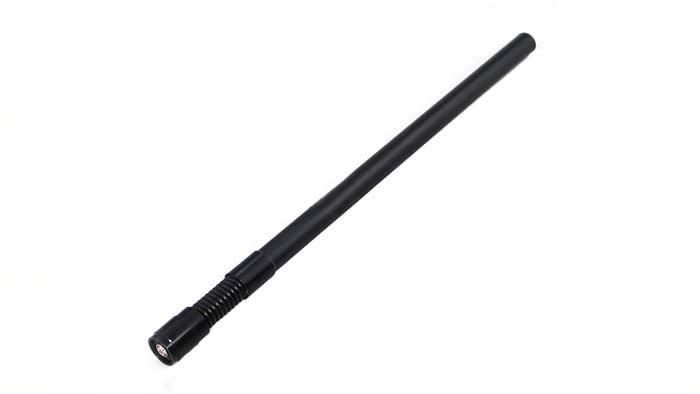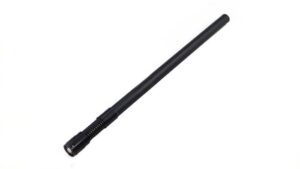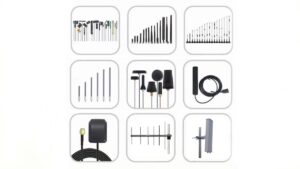Drone antenna is the key link between the sky and the ground.
With the rapid development of science and technology, UAV, as an emerging aircraft, has shown a wide range of application prospects in military, civil, and commercial fields.
As a key component of UAV communication and navigation, the design and performance of UAV antenna have a crucial impact on the overall performance of UAV.
In this paper, we will discuss the principle, application, and future development trend of UAV antenna so that we can better understand this cutting-edge technology.
The basic principle of UAV antenna
UAV antenna is the key component to realize the information transmission between UAV and ground control station, other UAV, or other communication equipment. Its basic principle lies in the radiation and reception of electromagnetic waves to realize the transmission and reception of signals.
The design of a UAV antenna needs to consider the flight height, speed, direction, and communication distance of the UAV and other factors to ensure that stable and efficient communication can be realized in various complex environments.
What is a drone antenna used for?
1. Military reconnaissance and strike
In the military, UAV antenna is widely used in reconnaissance, strike, and other tasks. Through efficient antenna design, UAVs can realize long-distance communication, precise positioning, and real-time data transmission, providing strong support for military operations;
2. Commercial aerial photography and monitoring
In the commercial field, UAV antennas also play an important role. Aerial photography, environmental monitoring, agricultural inspection, and other tasks require UAV antennas to provide stable, high-quality communication services;
3. Civil rescue and detection
In the civil field, UAV antenna is also widely used in rescue and detection. For example, in earthquakes, fire, and other disasters, UAVs can carry special antennas for rapid reconnaissance and rescue command;
In environmental monitoring, UAV antennas can assist in real-time collection and transmission of air quality, water quality, and other data.
What is the future development trend of UAV drone antenna?
1. Multi-frequency band, multi-polarization technology
With the continuous expansion of UAV application scenarios, the requirements for antenna performance are getting higher and higher. In the future, UAV antennas will adopt multi-frequency band and multi-polarization technology to adapt to the communication needs of different frequency bands and different polarization methods, and improve communication quality and efficiency;
2. Lightweight and miniaturized design
The load capacity of UAV is limited, therefore, lightweight and miniaturized design becomes an important trend in the development of UAV antenna. Through the use of new materials, optimized structure design, and other means, the weight and volume of the antenna are reduced, and the load capacity and endurance of the UAV are improved;
3. Intelligent and adaptive technology
Intelligent, adaptive technology will become an important future UAV antenna development direction. By introducing artificial intelligence, machine learning, and other technologies, the adaptive adjustment and optimization of the antenna to the environment can be realized, and the stability and reliability of communication can be improved.
What is a drone antenna for FPV?
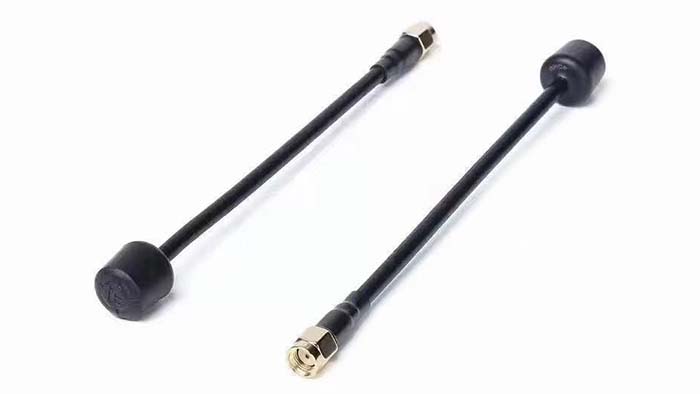
FPV antennas are used in first person view (FPV) systems where a camera streams real-time video from onboard a drone to a pilot or driver on the ground.
What are the UAV drone antenna types?
There are the Directional & Omni-Directional Antennas for UAVs.
Drone antennas can also be classified as directional or omni-directional. Directional antennas can achieve greater range at the cost of coverage, whereas omni-directional antennas provide coverage 360 degrees horizontally from the antenna, but are limited in range.
How do I know what drone antenna I need?
Location plays a huge factor in which kind of antenna you need and what kind of strength of signal you’ll have. The strength of the antenna you need is determined by the strength of the signal you get from your local transmitter and how close you are to it.
What is the role of drone antennas?
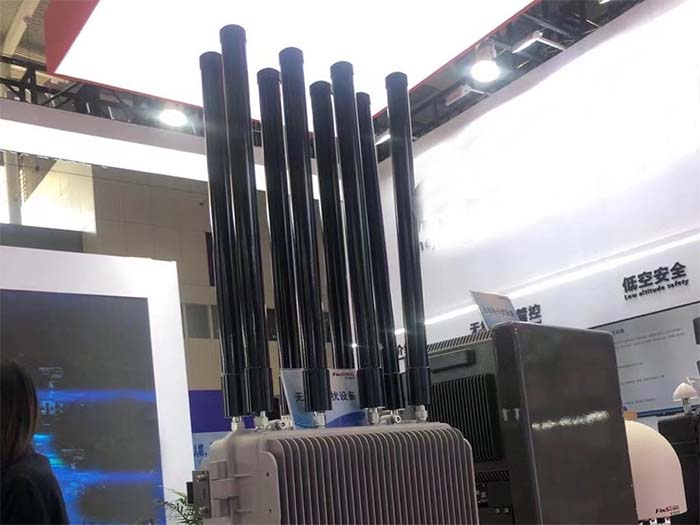
The main roles of drone antennas include drone antennas are devices that are used to send and receive electromagnetic signals.
They can receive and decode them to obtain commands sent by the ground controller and send information about the drone’s attitude, position, and status back to the ground controller. Antennas can also receive signals from other devices such as GPS signals, wireless video signals, etc.
The role of the drone antenna is specified as follows:
GPS antenna receives positioning signals
Drones use GPS antennas to receive positioning signals from multiple satellites, which are used to calculate the drone’s latitude and longitude as well as altitude.
GPS antennas are usually directional, oriented primarily towards the sky, and ideally should have hemispherical coverage. To enhance positioning accuracy, some UAVs may employ multi-GPS systems such as GPS, BDS, GLONASS, GALILEO, etc., as well as satellite-based augmentation systems.
These systems provide strong satellite signals in multiple systems and directions to achieve centimeter or even millimeter-level positioning accuracy.
Wi-Fi antenna system
Used for information transmission between the drone and the remote control. At the UAV end, the ideal antenna design should be spherical to ensure consistent performance in all directions in three-dimensional space.
In practice, an omnidirectional Wi-Fi antenna may have a 1~2 dB difference in gain in the horizontal plane, which may affect the quality of the mapping, especially in different attitudes. Common dipole antennas or dipole-like antennas can fulfill this need because they are more cost-effective.
GNSS antennas receive stable and reliable satellite navigation signals
GNSS antennas are responsible for receiving signals from global navigation satellite systems (e.g., GPS, GLONASS, GALILEO, etc.) to ensure that the UAV flies stably and reliably across the globe.
High-precision antennas such as the C&T RF antenna have excellent gain bandwidth and low elevation performance and can provide high-precision positioning data in a variety of occluded environments.
ADS-B System
ADS-B (Automatic Dependent Surveillance-Broadcast), whose Chinese name is Broadcast Automatic Dependent Surveillance (ADS-B), is a new ATC surveillance technology based on the Global Positioning System (GPS) and the use of air-ground and air-air data links to realize traffic monitoring and information transfer.
This technology can realize the sharing of flight information, the aircraft equipped with this system can broadcast its precise position and other data through the data chain, and can receive the position and other information broadcasted by other aircraft through this system, but it cannot control the braking and stopping of civil unmanned aerial vehicles.
Anti-jamming drone antenna performance
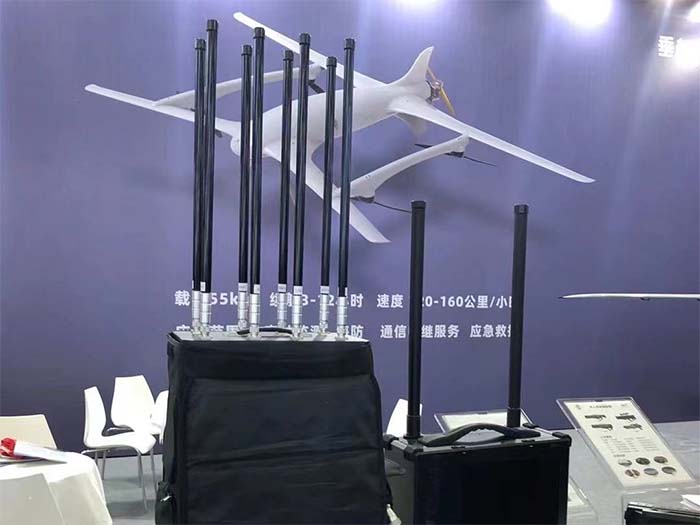
Drone antenna cable extension ways
The antenna’s cable extension method also affects the structural design and watertight performance of the UAV. The bottom outlet method simplifies the structural design of the UAV, improves the watertight performance, and enhances the anti-interference ability compared with the side outlet method.
In summary, the design and selection of UAV antennas are crucial to ensure stable flight and precise navigation of UAVs in various environments.
Conclusions
As a key component of UAV communication and navigation, the design and performance of UAV antenna has an important impact on the overall performance of UAV.
With the continuous development of science and technology, UAV antennas will continue to make breakthroughs and progress in terms of principles, applications, and development trends.
In the future, we have reason to believe that UAV antenna will play a greater role in more fields and make a greater contribution to the development and progress of human society.
To summarize, as an important part of UAV technology, the research and application of UAV antenna has a broad prospect and important significance.
We should continue to pay attention to the latest research results and technical developments of UAV antennas to promote the continuous development and innovation of UAV technology.
Besides this What is a Drone Antenna article, you may also be interested in the below articles.
PCB Antenna VS. External Antenna
Ceramic Antenna VS. PCB Antenna, A Comparison Guide
Wifi vs. 5G, is 5G better than Wifi?
Mobile Networks’ Evolution From 1G To 5G

